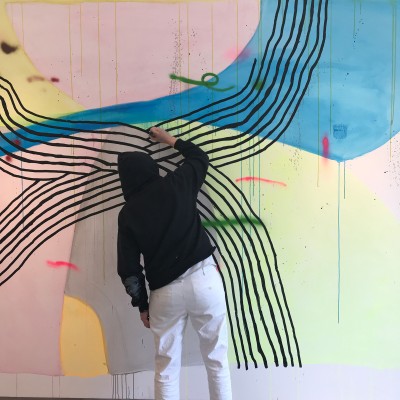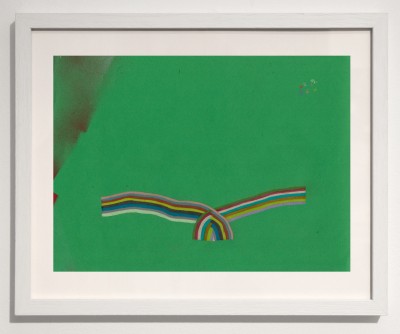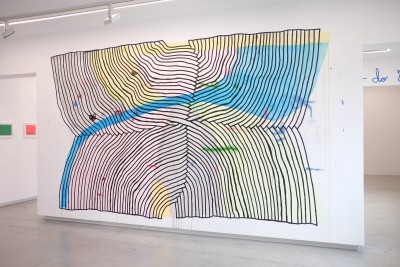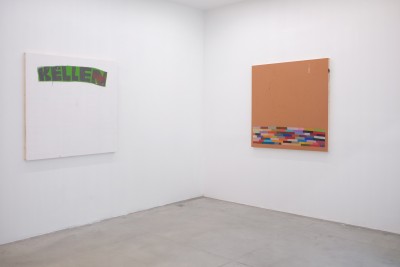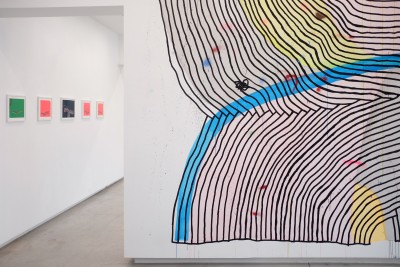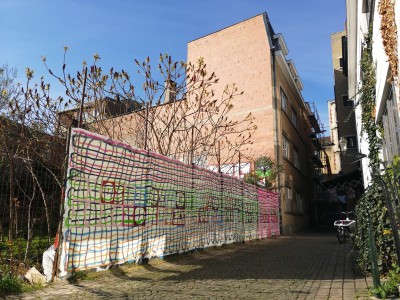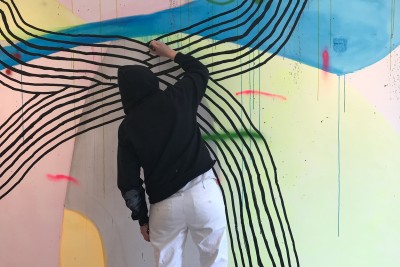Alicia McCarthy
Alicia McCarthy
–
Modern mythology classifies artists in three categories: The Genius, ahead of his time, followed by The Master, inspired by the genius and who enjoys the recognition of his peers. Finally, you have the copycats who mimic the Master and make a lot of money out of it. Alicia McCarthy belongs to the first category
During the 90s she shines on an alternative art scene in San Francisco known as the "Mission School", with other artists such as Barry McGee, Rubi Neri, Chris Johanson and Margaret Kilgallen. At a time of the “golden boy” artists like Damien Hirst and Jeff Koons, these young outsiders take a diametrically opposed path. Immersed in punk culture and graffiti, they favour DIY and a raw and low-fi aesthetic. As elsewhere, this sensitivity was the intuitive response of a generation to the progressive alienation of the individual and the need for community in response to the rise of technology and liberal capitalism. Their "urban rustic" aesthetic, as it was also called, became popular with social networks and also notably thanks to the movie "Beautiful Losers" in 2008.
Far from seeking the limelight, Alicia McCarthy continues her bohemian life and practices a social art; an art that radiates the energy of her community of artists and friends, a handmade art in an increasingly technological society. From materials cleverly salvaged and recycled from wood to paper, she uses a variety of paints (gouache, wall paint, spray paint) to transform her punk attitude into poetic and colourful shapes. Radiant zigzags, intertwined lines, vibrant stripes and fingerprints come to life in front of our eyes. The act of creation is not sophisticated in either gesture or composition; it is intuitive, basic and inclusive.
Although Alicia McCarthy aspires to nobility through lifestyle, she remains a tutelary figure of urban culture at its peak. It is only recently that the importance of her body of work has been recognized beyond the circle of her peers: by artists, critics and institutions, receiving prestigious awards. McCarthy's works have been presented at the Berkeley Art Museum (2018), SFMoMa (2017), the Oakland Museum of California Art (2014), the Craft and Folk Art Museum in Los Angeles (2013), the San Francisco Art Institute (2013), the Berkeley Art Center (2004), the Yerba Buena Arts Center in San Francisco (2004), and the Dallas Museum of Art.
Her work has also been the subject of numerous articles in the NY Times, Artforum, Frieze, Juxtapoz, Vulture, The Huffington Post, Hyperallergic. In 2017, Alicia McCarthy was honoured with the SFMOMA SECA Art Award after the Artadia Award in 2013. Her work is part of many important public and private collections such as the SFMOMA, The Oakland Museum of California, but also Facebook’s Headquarters in Menlo Park, the MIMA in Brussels and the American Academy of Arts & Letters of New York City.
Without her genius and a little help of Lady Luck, Alicia McCarthy would have been a shooting star in the history of Humanity. Her work seems more than ever in sync with the aspirations of our time: personal, creative, free and sincere.
Patti Smith in her description of punk attitude, sums up Alicia McCarthy's philosophy: "To me, punk rock is the freedom to create, freedom to be successful, freedom to not be successful, freedom to be who you are. It's freedom."
Raphael Cruyt

